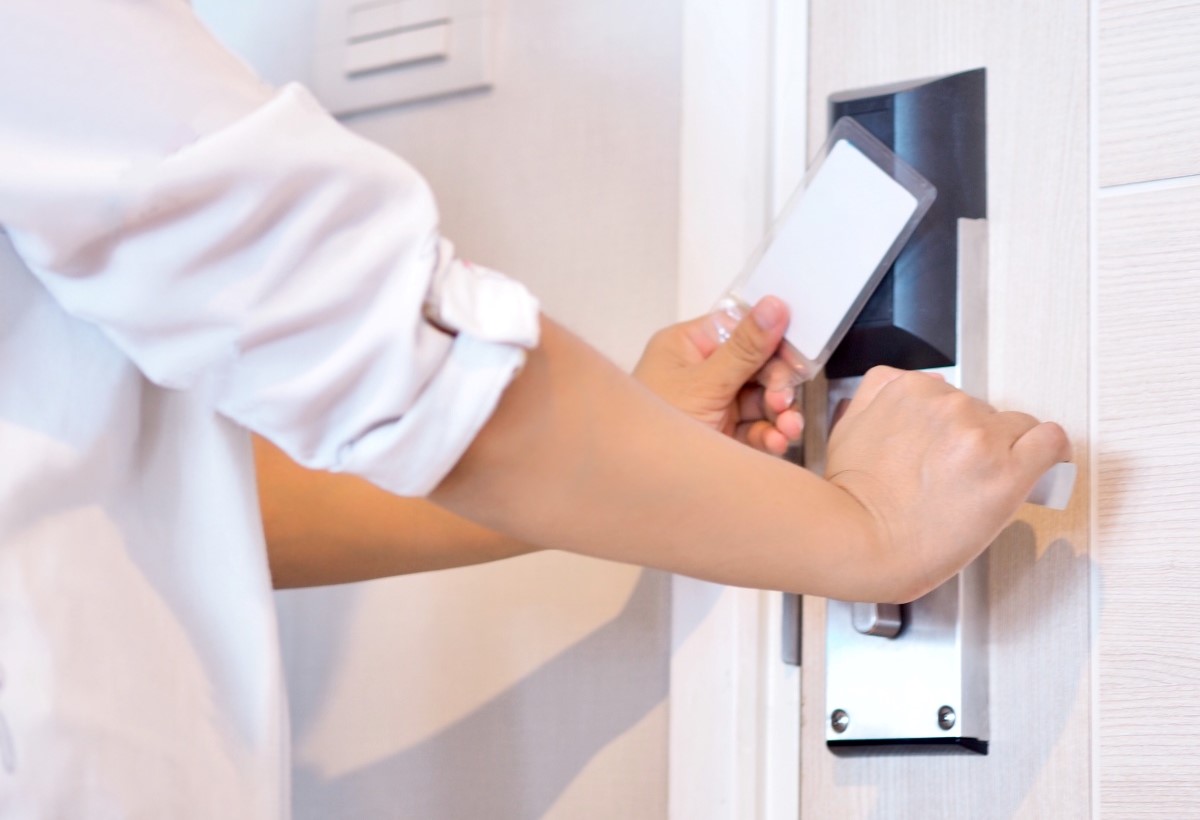Hospitals and healthcare facilities face a myriad of risks and security challenges every day. These often include mundane incidents, such as the occasional slip and fall accident, to catastrophic events such as an active shooter or infant abduction. The failure to mitigate risks can have a devastating impact on revenues, funding, and employee retention. With labor costs increasing and regulatory mandates growing stricter, identifying and mitigating hospital security risks is on the mind of every healthcare CEO, CFO, and CSO.
This blog will outline both the common and often-overlooked risks to healthcare facilities while revealing effective strategies and innovative door control solutions designed to fortify healthcare security.
Risk: Workplace Violence
The risk of physical and verbal violence against healthcare workers is one that is well documented. According to the Occupational Safety and Health Administration (OSHA), workers in healthcare settings are four times more likely to be victimized than workers in private industry. And while most incidents of workplace violence in healthcare are verbal in nature, other incidents involve assault, battery, domestic violence, stalking, and sexual harassment.
Unfortunately, the most common type of violence in healthcare is patient/visitor on employee violence. Research shows that this type of violence occurs most frequently in emergency and psychiatric treatment settings, increasing the need for security solutions in these spaces.
Mitigation Tactic: Panic Buttons and Keyed Lockdown Solutions
Panic buttons are a versatile, discreet solution that delivers peace of mind to healthcare staff. When utilized in an emergency scenario, such as a physical altercation, staff can press the button to perform a number of safety functions including emergency release of electric door locks, request for backup, or location-based alerts. In some cases, panic buttons can be integrated with healthcare access control systems, enabling a coordinated response with other security measures. In this way, staff receive immediate help during times of duress. Keyed emergency lockdown buttons also offer a secure solution for emergency exit door releases or panic/alarm activation. Once pushed, the button automatically latches requiring the use of a key to reset, ensuring a security response to the area.
Risk: Newborn Abductions
According to the National Center for Missing and Exploited Children (NCMEC), the frequency of infant abductions by nonfamily members at healthcare facilities is estimated to be 12 to 18 infants each year. Based on NCMEC data from 1997 to 2016, 66% of abducted infants were taken from a healthcare facility. Abductors are likely to target hospitals due to the inherent chaos within hospital environments that often makes it easier for them to go unnoticed. And while newborn/infant identification bracelets and ID checks are commonly used to help prevent such occurrences, they are unfortunately not enough to stop a determined abductor.
Mitigation Tactic: Delayed Egress Solutions
Delayed egress systems provide an opportunity to slow or thwart abductors when an attempted abduction has been made. With a delayed egress system, an irreversible alarm sounds and a timed countdown can begin as soon as someone attempts to operate an exit device or push open a door equipped with a delayed egress locking mechanism. When unauthorized individuals attempt to leave, they unknowingly activate an alarm and are delayed from leaving 15 to 30 seconds before the door can be opened. This provides personnel with the vital time to identify the child as well as the individual attempting to exit.
Risk: Pharmaceutical Theft
The theft of medications, life-saving drugs, and prescriptions are common in hospitals and can be committed at any level, either by visitors, patients, or staff. Not only is this a healthcare liability, but it also puts other patients at risk. For example, a study conducted by the Mayo Clinic found that healthcare workers who steal drugs frequently tamper with medications, leaving them contaminated. Because of this kind of drug theft and tampering, as many as 28,000 hospital patients were put at risk of contracting Hepatitis C over a 10-year period. This is just one small example of how the theft of pharmaceuticals in healthcare has far reaching, often unseen impacts.
Mitigation Tactic: Compact Magnetic Locks
Compact maglocks offer a reliable anti-theft solution for cabinets and drawers where pharmaceuticals are stored. Creating 300 pounds of direct holding force, a Dortronics Mini-Mite offers protection for cabinets and drawers much in the same way that larger maglocks secure standard doors. Mini-Mites are capable of being controlled individually, sequentially, or simultaneously from one or several locations. In this way, access to certain drugs can be limited based on application, job title, type, quantity, and more.
Risk: Diagnostic Interference
MRIs, X-Rays, CT scans, and other diagnostics are traditionally performed in protected areas within hospitals and healthcare facilities. Unauthorized access to areas where these devices are in use presents both a safety and health risk that can lead to possible radiation exposure, inaccurate test results, and potential equipment damage. Some diagnostic machines will even store patient data and images electronically, making unauthorized access a potential HIPAA violation.
Mitigation Tactic: Door Interlock/Mantrap Systems
The high regulation and health risks that come with diagnostic machinery requires strict access controls, such as a door interlock system. A door interlock system ensures that one door remains locked while the other is open, preventing any unauthorized or accidental entries in a two-door configuration. Dual access controls also limit unauthorized access by requiring authentication at both the first and second door, ensuring that only healthcare professionals and accompanying patients can access the diagnostic room. For diagnostic testing involving sensitive or intimate procedures, such as imaging or biopsies, a door interlock system enhances patient privacy and dignity.
The risks and proposed solutions outlined above just scratch the surface of how smart door control solutions can effectively mitigate risk in healthcare environments. Other potential solutions include the use of touchless switches for the healthful reduction in touch-surfaces and the use of double or triple vertically mounted maglocks for the ultimate defense against unauthorized entry or egress.
At Dortronics, our team of door control specialists understand the unique risks that healthcare facilities face and can help you select the door control solutions that best meet your healthcare facility’s needs. As a leading designer and manufacturer of electronic locking solutions proudly made in the U.S.A., Dortronics experienced team is available to provide personal assistance – down to the design and manufacturing of custom healthcare door control solutions.
Contact us to get started, or browse our interactive Medical Campus to discover how our comprehensive range of door control solutions can help better protect your healthcare facility.





